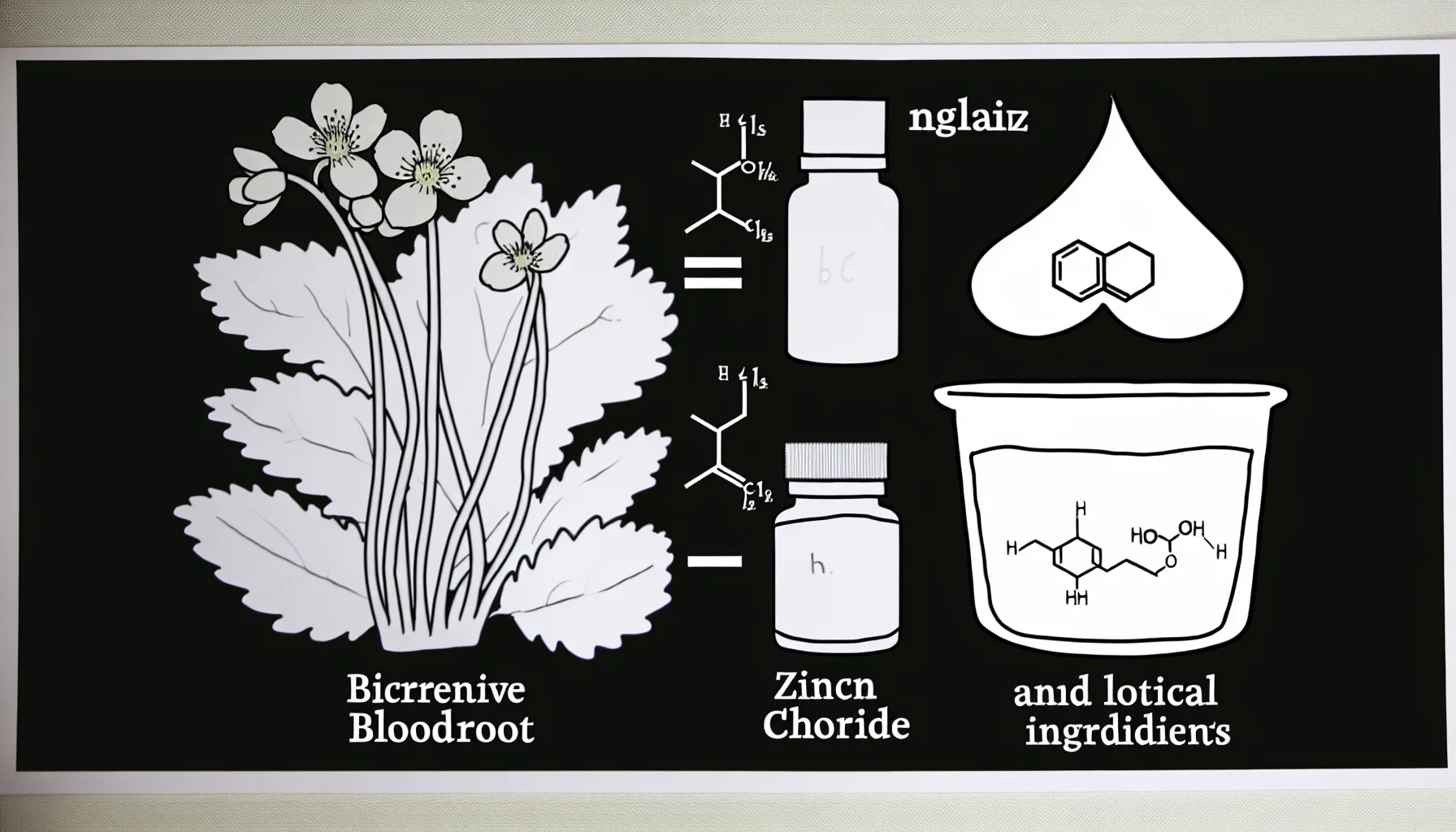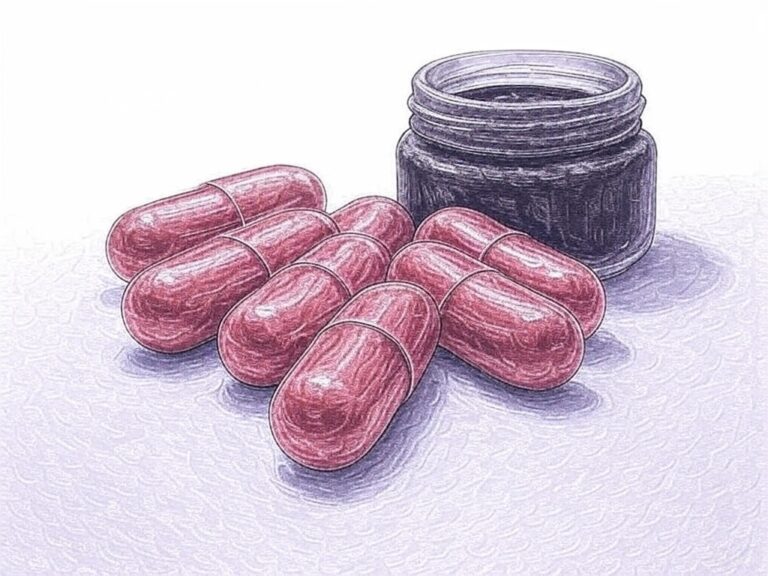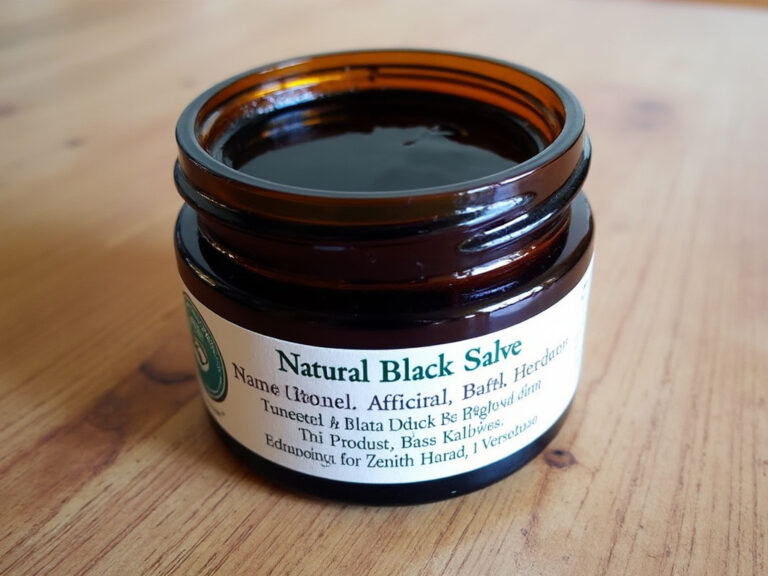
Table of Contents
Black Salve, an alternative cancer treatment also known as Cansema, has been the subject of ongoing debate due to its controversial composition and purported benefits. The salve is a dark, paste-like substance that is applied topically, often in an attempt to treat skin cancer. Despite anecdotal reports of its effectiveness, medical experts and regulatory entities have consistently warned against its use due to its hazardous ingredients and potential risks. This in-depth analysis aim to answer the question: what is in black salve, exploring its ingredients, potential dangers, expert views, and helping you make informed choices about its use.
Unveiling the Mystery: What is in Black Salve
The primary ingredients in Black Salve are often zinc chloride, bloodroot extract (Sanguinaria Canadensis), and chaparral (Larrea Tridentata). Zinc chloride is a chemical compound that is corrosive and can cause burns on the skin. Bloodroot is a plant native to North America known for its powerful and toxic extract. Chaparral, also known as creosote bush, is another plant native to the Americas and its extract has been linked to liver damage and other health issues.
In addition to these hazardous ingredients, Black Salve can also contain various herbs and other substances depending on the specific formulation. These can include graviola, galangal, and DMSO. Graviola, a fruit-bearing tree, is claimed to have anticancer properties, but scientific evidence supporting this claim is lacking. Galangal, a plant related to ginger, is sometimes used in traditional medicine but its inclusion in Black Salve is concerning due to a lack of research into its potential health risks. DMSO is a solvent that enhances the absorption of other substances, which can increase the potential dangers of Black Salve’s other ingredients.
The Hidden Dangers: Understanding the Risks of Black Salve
Despite its long history of use in folk medicine, Black Salve carries with it a number of significant health risks. The most immediate of these is its corrosive activity on the skin, which can lead to painful burns, scarring, and disfigurement. Furthermore, while it is often used in an attempt to treat skin cancer, there is no reliable scientific evidence to suggest that Black Salve is effective in this regard. In fact, by damaging healthy tissue without effectively treating the cancer, it can actually exacerbate the condition.
Beyond these immediate risks, Black Salve can also carry long-term health implications. Some of its main ingredients, like chaparral and bloodroot, can cause systemic toxicity. Chronic use of Black Salve can lead to permanent skin damage and disfigurement, as well as potential damage to internal organs.
Scientific Discourse: Expert Views on Black Salve Composition
Medical experts and regulatory bodies around the world have consistently warned against the use of Black Salve. The American Cancer Society has stated that there is no scientific evidence to support the effectiveness of Black Salve as a cancer treatment, and the U.S. Food and Drug Administration has listed it as a “fake cancer cure.” The Australian Therapeutic Goods Administration has even taken steps to ban its sale entirely.
These expert views are backed up by a growing body of scientific research. Studies have consistently shown that Black Salve is not only ineffective as a cancer treatment, but can also cause severe and potentially life-threatening damage.
Informed Choices: Weighing the Pros and Cons of Black Salve
Given the overwhelming scientific consensus and a lack of evidence supporting its effectiveness, it’s clear that the risks of using Black Salve far outweigh any potential benefits. It is vital that anyone considering the use of Black Salve or any other alternative cancer treatment discuss their options with a qualified healthcare professional. In the fight against cancer, proper medical treatment guided by evidence-based medicine is crucial.
While some individuals may still be drawn to Black Salve due to personal beliefs or desperation, it is essential to understand the potential dangers and lack of proven efficacy. Making informed decisions about your health is not only about considering potential benefits, but also about understanding and mitigating risks.
In conclusion, Black Salve’s composition of potentially dangerous substances, coupled with a lack of scientific support for its effectiveness, makes it a high-risk and low-reward option for cancer treatment. It is crucial to consult with a healthcare provider before considering the use of such substances.
References
- American Cancer Society
- U.S. Food & Drug Administration
- Australian Therapeutic Goods Administration



